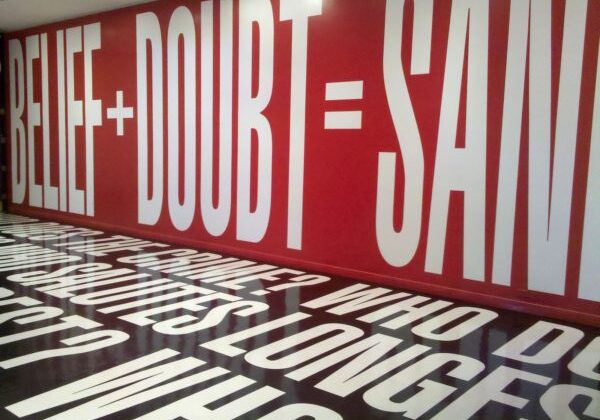Do the typefaces and fonts you choose for your brand materials matter? As long as it’s in a language the audience understands, they’ll get the intended message, right? Wrong. Typefaces and fonts are essentially the shapes of the letters. Shapes are multi-sensory, meaning they affect more than one of your senses and can easily elicit emotions, even before you read the word. For example: Times New Roman comes off as reliable, and Comic Sans comes across as childish and whimsical. Imagine for a minute reading the New York Times printed in Comic Sans. Would you take any of the articles seriously, or even pick up the paper at the newsstand in the first place? Probably not.
It is important to choose the typefaces and fonts for your brand carefully. Audiences will assume a lot about your brand based on your choices. Are you formal, traditional, modern, or feminine? Typography choices should not turn your ideal customers away. A great designer will help you decide which characteristics you want your brand to convey — then, ensure your brand’s typography is legibly presenting your organization’s content and personality.

Remixed’s 10 Step Process
Our 10-step process is the backbone of our customer journey. From the initial discovery phase, where we listen to the client and understand their strategic objectives, to strategic development, design, multiple rounds of refinement, and the final deployment of deliverables, clients should experience an engaging, collaborative, and satisfying journey with our agency. Listen (Discovery Phase):…

8 Signs You Need to Update Your Brand
In today’s ever-changing business landscape, it’s important for companies to continually assess and update their brand to remain relevant and competitive. A brand is more than just a logo; it’s the perception that customers have of your business. Therefore, if your brand is outdated or suffering from negative perceptions, it’s time to re-evaluate and refresh…

4 Things to Consider When Embarking on a Rebrand
Your brand is the foundation of your business. It communicates who you are, what you do, and why you do it. But what happens when your brand no longer aligns with your business goals or fails to resonate with your target audience? This is where a rebrand can come into play. A rebrand can help…

The Difference Between Graphic Art and Graphic Design
Graphic Art – the fine and applied art of representation, decoration, and writing or printing on flat surfaces together with the techniques and crafts associated with them. Essentially, a graphic artist may create art for the sake of art. They may want to convey a certain idea or story, or they may not. Graphic artists…

What is Typography?
Essentially, typography is the visual component of the written word. It is the technique, and art, of arranging letters in a way that makes the text legible, clear, and visually appealing to the reader. Typography involves the structure, size, weight, and style of the characters. It also considers the amount of space between the letters,…

6 Reasons why a Strong Brand is Important for your Small Business
Building a strong brand is a critical component of any successful business. A well-crafted brand strategy not only helps businesses establish recognition and build trust with their customers, but also supports advertising efforts and inspires employees. Furthermore, strong branding can increase a business’s financial value and generate new business opportunities through word-of-mouth referrals. As the…

What is Branding? And, Why is it Important for Your Business?
Introduction to Branding and Its Importance Branding is the process of creating and maintaining a unique identity and image for a company or product. It involves the development of a company’s name, logo, design, and messaging to convey a specific set of values and attributes. A strong brand can help build customer loyalty, differentiate a…

Why It’s Important To Have A Brand Promise
In today’s fast-paced and ever-changing business landscape, it’s more important than ever for companies to establish a clear and compelling brand promise. A strong brand promise not only helps companies differentiate themselves from their competitors, but also sets expectations for customers and helps build trust and loyalty. According to Seth Godin, a marketing expert and…

